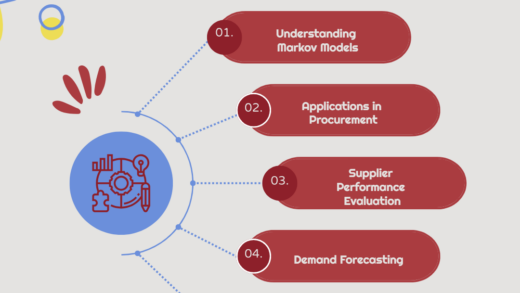The National Health Service (NHS) stands as a testament to the power of public health. Its scale and reach mean it deals with an enormous volume of suppliers, each contributing to the mammoth task of keeping the nation healthy. However, the immense scale of the NHS also means that there is a risk of inefficiencies creeping in. The quality and clarity of the supply chain data play a pivotal role in ensuring the effective management of resources. Properly managed data can offer NHS organisations full transparency over their spending, allowing them to leverage cost-saving opportunities, consolidate spending across clinical and non-clinical areas, and efficiently submit to the NHS England’s spend comparison tool.
To achieve these aims, NHS Trust organisations need to adopt a systematic approach to data improvement. Here are ten actions they can implement:
Supplier Data Standardisation
In the labyrinthine landscape of NHS procurement, where millions of items are sourced from thousands of suppliers, maintaining consistency and clarity in data becomes paramount. At the heart of achieving this lies the principle of Supplier Data Standardisation. This is the practice of ensuring that data from different suppliers follows a uniform format and meets a consistent set of criteria, facilitating easier management, comparison, and analysis.
Why is Supplier Data Standardisation Crucial for the NHS?
- Efficiency: Uniform data reduces the time and effort needed to cross-reference, analyse, and report, leading to faster decision-making.
- Cost Savings: With standardised data, it’s easier to identify pricing discrepancies, over-charges, or areas of potential consolidation, leading to direct financial savings.
- Transparency: Standard data ensures that everyone from procurement professionals to healthcare practitioners has a clear understanding of the supplies, their sources, and their costs.
- Improved Forecasting: With consistent data structures, the NHS can better predict future needs and expenditure, ensuring better preparedness.
- Compatibility: Standardised data easily integrates with various IT systems, databases, and platforms, eliminating the need for repeated manual data adjustments.
How to Achieve Supplier Data Standardisation:
- Set Clear Guidelines: Create a comprehensive guide for suppliers detailing the format, criteria, and standards expected for every data submission. This could include naming conventions, product codes, pricing formats, etc.
- Implement Data Validation Tools: Use software that checks incoming supplier data for compliance with set standards. Any deviations can be flagged for correction before the data is integrated into the main system.
- Regular Communication with Suppliers: Host workshops, seminars, or training sessions to educate suppliers about the importance of data standardisation and provide them with the tools and knowledge to comply.
- Feedback Loop: Offer suppliers feedback on their data submissions. Regular reviews can help identify areas of improvement and ensure ongoing adherence to data standards.
- Leverage Technology: Invest in modern Enterprise Resource Planning (ERP) and Supplier Relationship Management (SRM) systems that inherently support data standardisation.
- Penalties and Incentives: Consider implementing a system where suppliers are incentivised for consistent, standardised data submissions and face penalties for repeated deviations.
- Data Stewards: Appoint dedicated personnel responsible for ensuring data quality. These stewards can oversee supplier data, communicate standards, and ensure ongoing compliance.
- Collaborate with Other Health Bodies: Work with other health organisations to adopt similar data standards. This could create a ripple effect, encouraging more suppliers to standardise their data.
Supplier Data Standardisation isn’t just a best practice—it’s an essential strategy for an institution as vast and vital as the NHS. By ensuring that supplier data adheres to strict, consistent standards, the NHS can leverage its vast resources more efficiently, ensure transparency, and deliver better patient care. The journey to full standardisation may be complex, but the rewards, in terms of efficiency, clarity, and cost savings, are well worth the effort.
2. Invest in Advanced Data Analytics Tools
The health sector, especially vast systems like the NHS, produces a deluge of data every day. To truly leverage this data for operational efficiency, improved patient care, and fiscal responsibility, the NHS must turn to sophisticated analytics tools. Among these, PowerBI and Artificial Intelligence (AI) techniques stand out as game changers.
PowerBI: Visualising Healthcare Data
Microsoft’s PowerBI is a powerful analytics tool that provides interactive visualizations and business intelligence capabilities. Its value proposition for the NHS includes:
- Interactive Dashboards: With PowerBI, NHS staff can create comprehensive dashboards that show a real-time overview of various metrics, from patient admissions to procurement spend.
- Easy Integration: PowerBI can pull data from a wide range of sources, including Excel spreadsheets, cloud-based and on-premises data sources like SQL Server, and other third-party platforms.
- Customisation: The tool allows for the creation of custom reports tailored to the specific needs of different NHS departments, ensuring relevant insights for all users.
- Collaboration: PowerBI promotes data-driven decision-making by allowing teams to collaborate on reports and dashboards, ensuring everyone is on the same page.
Adoption of AI Techniques: A New Frontier for Data Analysis
AI has shown immense promise in transforming healthcare operations and patient outcomes. Here’s how it can revolutionize data analytics for the NHS:
- Predictive Analytics: AI can analyse patterns in vast datasets to predict future trends. For the NHS, this could mean forecasting patient inflow during specific seasons, predicting equipment failures, or estimating future medicine requirements.
- Natural Language Processing (NLP): AI-driven NLP can sift through patient records, notes, and other text-heavy documents to extract meaningful insights, helping in faster diagnosis or understanding patient feedback.
- Automated Data Cleansing: One of the challenges with big data is ensuring its accuracy and consistency. AI tools can be trained to recognize and rectify anomalies in datasets, ensuring the NHS works with clean and reliable data.
- Optimizing Supply Chains: AI can analyse procurement data to identify inefficiencies, suggest optimal order quantities, or highlight potential cost-saving opportunities.
- Personalized Patient Care: By analysing patient data, AI can help healthcare professionals devise more personalized care plans, ensuring better health outcomes.
Implementation Strategy
- Training and Workshops: Introduce regular training sessions for NHS staff to familiarize them with PowerBI’s capabilities and AI-driven tools. This ensures the organization gets the maximum benefit from these technologies.
- Collaboration with Tech Vendors: Work closely with technology providers to ensure the analytics tools are tailored for the unique needs of the NHS.
- Data Security Protocols: With increased data analysis, there’s also the need to ensure patient data’s privacy and security. Implement strict data governance and cybersecurity measures.
- Pilot Programs: Before a full-scale rollout, run pilot programs in select departments to gauge the effectiveness and potential challenges of these tools.
The age of data-driven decision-making is here. By embracing tools like PowerBI and integrating AI techniques into their data analytics, the NHS can ensure better operational efficiency, fiscal responsibility, and most importantly, enhanced patient care. These investments, though substantial, promise significant returns, making them essential for a future-ready NHS.
3.Regular Data Audits
Why are Regular Data Audits Important for the NHS?
- Accuracy: Mistakes or inaccuracies in healthcare data can have profound implications, from incorrect billing to potential risks in patient care. Regular audits ensure that the data is consistently correct.
- Regulatory Compliance: With the stringent data protection laws and regulations in place, ensuring compliance is vital for the NHS. Data audits can ensure all personal and sensitive information is handled correctly.
- Optimizing Resources: An accurate understanding of data can help in resource allocation, whether it’s staffing needs or medical equipment procurement.
- Data Security: Regular audits can identify potential security vulnerabilities, ensuring that patient and organisational data remains protected against breaches.
- Operational Efficiency: Clean, well-organised data can enhance operational efficiency, enabling quicker decision-making and more streamlined processes.
Steps in Conducting Data Audits in the NHS:
- Define Objectives: Clearly outline what the audit aims to achieve. This could range from checking data accuracy, compliance with data standards, or identifying potential security risks.
- Data Sampling: Instead of auditing the entire dataset, select a representative sample. This ensures efficiency while still providing a clear picture of the data’s overall health.
- Data Validation: Check the sampled data against set standards and benchmarks. This can involve verifying the accuracy of patient records, consistency in billing data, or adherence to data entry standards.
- Identify Discrepancies: Highlight any inconsistencies, errors, or anomalies found during the audit. This forms the basis for the corrective action.
- Corrective Action: Once discrepancies are identified, set in motion processes to rectify these errors. This can involve retraining staff, investing in better data entry tools, or implementing stricter data validation processes.
- Document Findings: Maintain a comprehensive report of the audit findings. This provides a historical reference and can be a valuable tool in future audits or for regulatory reviews.
- Feedback Loop: Ensure that insights and findings from the audit are communicated back to the relevant teams or departments. This can promote better practices and prevent recurrent errors.
- Regular Scheduling: Data audits shouldn’t be one-off occurrences. They should be scheduled regularly, whether annually, bi-annually, or based on specific triggers like system upgrades or significant operational changes.
Leveraging Technology in Data Audits:
Modern technology can be a significant boon in conducting data audits. Machine learning algorithms can help in identifying patterns or anomalies in vast datasets. Automated tools can help in data validation, reducing manual effort and increasing the audit’s speed.
4.Supplier Education and Training
Within the vast ecosystem of the NHS, suppliers play a crucial role. They provide the goods and services that power everything from medical treatments to the daily operations of the institution. Given this interdependence, it’s essential for these suppliers to align with the standards, expectations, and values of the NHS. Supplier education and training emerge as a key strategy to achieve this alignment, ensuring that the supply chain remains efficient, responsive, and reliable.
Why is Supplier Education and Training Essential for the NHS?
- Maintaining Quality Standards: To ensure patient safety and service quality, the NHS has stringent standards for the products and services it procures. Training ensures suppliers are aware of and meet these standards consistently.
- Streamlining Processes: Properly educated suppliers can better understand the procurement processes of the NHS, resulting in smoother transactions, fewer errors, and quicker turnaround times.
- Promoting Innovation: By understanding the specific needs and challenges of the NHS, suppliers can innovate, offering solutions that bring more value or efficiency.
- Data Management and Integration: As the NHS moves towards more digital and data-driven operations, suppliers need to be trained on the relevant data standards, submission protocols, and integration methods.
- Building Stronger Relationships: An informed and trained supplier is more likely to be a collaborative partner, working with the NHS to overcome challenges and optimise operations.
Implementing Supplier Education and Training: Key Strategies
- Regular Workshops: Organise periodic workshops that cover essential topics like procurement processes, quality standards, regulatory compliance, and data submission protocols.
- Online Training Modules: Given the scale and diversity of suppliers, online modules can offer flexibility, allowing suppliers to undertake training at their convenience.
- Onboarding Programs: Every new supplier should undergo a comprehensive onboarding program, ensuring they are well-versed with NHS’s expectations from the outset.
- Feedback and Evaluation: Post-training, suppliers should be evaluated to ascertain the training’s effectiveness. Feedback can help refine future training modules.
- Collaborative Forums: Create platforms where suppliers can collaborate with NHS professionals, discuss challenges, share insights, and learn from each other.
- Regular Updates: The healthcare landscape is ever-evolving. Regular updates on new protocols, standards, or regulations can ensure suppliers remain informed.
- Certification Programs: Consider offering certifications to suppliers who complete training modules. This not only incentivises training but also provides a benchmark of supplier competence.
- Hands-on Training: For specific, complex areas, consider hands-on or practical training sessions. For instance, training on a new digital procurement platform would benefit from a hands-on approach.
Challenges and Considerations
- Diverse Supplier Base: The NHS deals with a myriad of suppliers, each with its expertise and operational style. Training programs should be adaptable to cater to this diversity.
- Resource Allocation: Organising regular training and education programs requires resources – both in terms of time and money. The ROI, in terms of smoother operations and better quality, however, justifies this investment.
- Keeping Content Updated: The content of training programs must be regularly updated to reflect the current needs, challenges, and standards of the NHS.
A well-informed supplier is an asset to the NHS, contributing not just goods and services but also value, innovation, and efficiency. Investing in supplier education and training is not just about optimising the supply chain but also about nurturing partnerships that can drive the NHS forward in its mission to deliver exceptional healthcare.
5.Implementing a Data Governance Framework
Data is at the core of modern healthcare systems. For an organisation as vast and integral as the NHS, the importance of managing data with accuracy, security, and consistency cannot be overstated. A Data Governance Framework offers a structured approach to ensure that data is handled effectively across its lifecycle. But what does implementing such a framework entail, and why is it so critical for the NHS?
Why a Data Governance Framework is Crucial
- Data Integrity and Accuracy: Healthcare decisions are often made based on data. Ensuring that this data is correct and reliable is crucial for patient safety and effective medical interventions.
- Regulatory Compliance: The healthcare sector is subject to numerous data protection and privacy regulations. A structured approach to data governance ensures that the NHS remains compliant and avoids potential legal repercussions.
- Efficient Operations: Clean, well-organised data can significantly streamline operational processes, from patient admissions to resource allocation.
- Security and Privacy: With the rising threat of cyberattacks and data breaches, ensuring the security of patient and organisational data is paramount.
- Enhanced Trust: Patients trust the NHS with their most sensitive information. By demonstrating a commitment to data governance, the NHS strengthens this trust.
Steps to Implement a Data Governance Framework
- Establish Clear Objectives: Define what you aim to achieve with the data governance initiative. This could be ensuring data accuracy, achieving regulatory compliance, or enhancing data security.
- Stakeholder Engagement: Involve key stakeholders, including clinicians, IT professionals, administrators, and even patient representatives, to ensure a holistic approach.
- Data Ownership: Designate data stewards or owners for different data categories. These individuals or teams will be responsible for the accuracy, accessibility, and security of the data they oversee.
- Define Data Standards: Establish standards for data entry, format, and validation. This ensures consistency and reliability across the data ecosystem.
- Implement Data Security Measures: This includes encryption, access controls, and regular security audits. Consider tools that offer real-time monitoring for any security breaches.
- Regular Audits and Quality Checks: Periodically review and validate data to identify inconsistencies or errors. Implement mechanisms for timely corrections.
- Training and Awareness: Organise regular training sessions to familiarise staff with data governance protocols. An aware staff is a crucial line of defence against inadvertent data mishandling or breaches.
- Technology Integration: Invest in technology solutions that support data governance. This could include tools for data validation, data lineage tracking, or automated compliance checks.
- Documentation: Document data governance policies, protocols, and standards. This not only serves as a reference but also demonstrates compliance during regulatory reviews.
- Continuous Review and Adaptation: Data governance isn’t a one-off project. It needs regular reviews and adaptations to accommodate the evolving healthcare landscape, technology advancements, and regulatory changes.
Challenges in Implementation
- Resource Allocation: Implementing a robust data governance framework requires investment in terms of technology, manpower, and time. However, the long-term benefits in terms of efficiency, trust, and compliance far outweigh these costs.
- Change Management: Moving to a structured data governance approach might require significant changes in existing workflows or systems. This can meet resistance, making it crucial to have a strong change management strategy in place.
In the digital age, data is both an asset and a responsibility. For the NHS, implementing a Data Governance Framework is not just about managing bytes and databases. It’s about upholding the trust that millions place in the institution, ensuring patient safety, and driving operational excellence. In this context, data governance is not just a best practice; it’s a necessity.
6.Centralising Data Management
Centralising data management has become a focal point for many organisations, including those in the healthcare sector. The NHS, with its vast and intricate network of suppliers, processes, and systems, stands to benefit immensely from a unified data management system. Yet, introducing third-party spend analytics into this equation brings forth its own set of challenges. Let’s delve deeper into what centralising data management means for the NHS and the potential roadblocks posed by third-party spend analytics.
The Merits of Centralising Data Management
- Unified View: Centralising data gives stakeholders a singular, holistic view of operations, resources, and expenses. This clarity can improve decision-making and resource allocation.
- Operational Efficiency: A centralised data management system reduces the redundancy of efforts, streamlines processes, and fosters a seamless flow of information.
- Data Integrity and Accuracy: By reducing the number of touchpoints and systems, there’s a decreased risk of data discrepancies or errors.
- Enhanced Security: A unified data system can have consistent security protocols, ensuring that sensitive patient and organisational data is safeguarded.
Challenges of Adopting Third-party Spend Analytics
- Integration Issues: The NHS uses a multitude of systems, software, and processes. Integrating a third-party tool into this existing ecosystem can be complex, leading to potential data silos, mismatches, or integration failures.
- Data Privacy Concerns: Using an external tool for analysing expenditure brings up questions of data security and privacy. How is the data handled, stored, and processed by the third-party? This is especially pertinent given the sensitive nature of healthcare data.
- Dependency on External Platforms: Relying on a third-party system can make the NHS vulnerable to external factors such as system downtimes, software glitches, or even the third-party vendor’s business continuity.
- Cost Implications: While spend analytics tools promise cost savings in the long run, there’s an initial investment in terms of licensing, integration, and training. The ROI needs to be carefully evaluated.
- Customisation Limitations: Third-party tools might not always align perfectly with the specific requirements and nuances of the NHS. Customising the tool might be restrictive, leading to potential gaps in analytics.
- Change Management: Introducing a new system means changes in workflows, processes, and roles. Managing this change, ensuring staff adapt to the new system, and mitigating resistance can be challenging.
- Data Sovereignty: Where is the data stored and processed? If it’s outside the UK, there are added layers of regulatory considerations and potential risks.
Navigating the Challenges
- Due Diligence: Before selecting a third-party tool, conduct a thorough review of its features, security protocols, and track record. Seek testimonials or case studies from similar organisations.
- Pilot Implementation: Instead of a full-scale rollout, consider a pilot implementation. This allows the NHS to assess the tool’s efficacy, integration capabilities, and potential issues in a controlled environment.
- Data Management Protocols: Clearly define how data will be shared, processed, and stored. Ensure that there are strict clauses regarding data privacy and security in contracts.
- Continuous Training: Equip staff with the necessary training to use the third-party tool effectively. This can mitigate resistance and streamline the transition.
- Feedback Mechanism: Establish a mechanism for staff to report issues, provide feedback, or seek clarifications regarding the new system. This can aid in quickly identifying and rectifying potential problems.
Centralising data management in the NHS offers a promising avenue for enhanced efficiency, clarity, and decision-making. While third-party spend analytics tools provide valuable insights and potential cost savings, they come with their own set of challenges. By acknowledging these challenges and proactively addressing them, the NHS can harness the power of data while ensuring operational integrity and patient trust.
7.Encouraging Feedback
In any organisation, especially one as vast and complex as the NHS, feedback serves as a critical bridge between policy-making and ground reality. It is a tool to gauge the efficiency of operations, the effectiveness of service delivery, and the satisfaction levels of both patients and staff. Let’s delve deeper into the importance of feedback within the NHS, the methods to encourage it, and the transformative potential it holds.
Why Encouraging Feedback is Essential
- Identifying Strengths and Weaknesses: Feedback offers insights into areas where the NHS excels and areas where improvements are required. It helps in understanding the impact of certain policies and protocols on patient care and staff morale.
- Driving Continuous Improvement: For an institution that touches millions of lives daily, the pursuit of excellence is continuous. Feedback serves as a catalyst, highlighting areas that need attention or redressal.
- Building Trust: When patients and staff feel their opinions are valued and considered, it fosters trust. This trust is the cornerstone of a healthy patient-provider relationship and is essential for staff retention and morale.
- Informing Strategy: Real-time feedback can inform strategic decisions, ensuring they are grounded in actual experience rather than just theoretical considerations.
Strategies to Encourage Feedback
- Easy Access to Feedback Channels: Whether it’s online platforms, physical suggestion boxes, or feedback kiosks in hospitals, ensuring that avenues to give feedback are accessible and user-friendly is crucial.
- Regular Surveys: Implement periodic surveys targeting both patients and staff. These can be in-depth annual surveys or shorter, more frequent ones to capture timely insights.
- Feedback-driven Meetings: Encourage teams and departments to hold regular meetings where feedback is discussed, and potential action points are identified.
- Promote a Culture of Openness: The top leadership should advocate for a culture where feedback, even if critical, is welcomed. Addressing negative feedback positively can encourage more people to share their thoughts without fear of backlash.
- Anonymous Feedback: Some individuals might feel more comfortable giving feedback if they know their identity won’t be revealed. Offering channels for anonymous feedback can lead to more candid and insightful observations.
- Feedback Rewards: Incentivise feedback by introducing rewards or recognition for valuable suggestions. This could be in the form of acknowledgements, certificates, or even tangible rewards.
- Act on Feedback: Merely collecting feedback isn’t enough. Demonstrating that feedback leads to actual change is crucial. Regularly communicate how feedback has informed changes or improvements in the system.
- Feedback Workshops: Organise workshops where patients, their families, and staff can discuss their experiences openly. Such interactive sessions can provide nuanced insights that standard feedback forms might miss.
- Digital Platforms: Utilise digital platforms like apps or websites, where users can quickly leave feedback. These platforms can also employ AI-driven analytics to categorise and analyse the feedback for actionable insights.
Challenges in Encouraging Feedback
- Volume vs Value: Given the size of the NHS, the volume of feedback can be overwhelming. Sifting through to identify valuable insights is a challenge.
- Fear of Repercussion: Staff might be hesitant to provide negative feedback due to fear of professional repercussions. Ensuring anonymity and promoting a culture of openness is crucial.
- Feedback Fatigue: Over-soliciting feedback can lead to fatigue, with individuals becoming less inclined to participate.
Feedback, when encouraged, collected, and acted upon effectively, has the potential to drive transformative changes in the NHS. It helps align the institution’s operations with the actual needs and expectations of patients and staff. In the pursuit of healthcare excellence, feedback is not just a tool but a compass, guiding the NHS towards better patient care, improved operations, and enhanced staff satisfaction.
8.Developing Key Performance Indicators (KPIs) for Data Management
Key Performance Indicators (KPIs) serve as quantifiable measures to evaluate the success of an organisation in achieving its objectives for a specific activity or process. In the context of data management for the NHS, KPIs help to gauge the effectiveness, efficiency, and reliability of data handling and usage. Let’s delve deeper into why KPIs are essential for data management and how to develop them effectively.
Importance of KPIs for Data Management
- Performance Assessment: KPIs provide a clear, quantifiable metric to assess how well the organisation ‘s data management initiatives are performing.
- Guiding Strategy: They act as benchmarks to guide data strategies, ensuring that efforts are aligned with the overall goals of improving patient care and operational efficiency.
- Resource Allocation: By understanding which areas are performing well and which need improvement, resources can be more effectively allocated.
- Continuous Improvement: Through regular monitoring of KPIs, the organisation can identify areas of improvement, ensuring that data management processes evolve and adapt over time.
- Stakeholder Accountability: With clear KPIs, it becomes easier to hold relevant departments or teams accountable for the data’s accuracy, security, and usability.
Steps to Develop KPIs for Data Management
- Align with Objectives: Understand the broader goals of the NHS’s data management strategy. Whether it’s enhancing data security, improving data quality, or streamlining data access, the KPIs should reflect these goals.
- Be Specific: A KPI should be specific and measurable. Instead of a vague goal like “Improve data quality,” a KPI might be “Reduce missing data entries by 15% over the next quarter.”
- Ensure Relevance: The KPIs chosen should be relevant to the current challenges and objectives of the NHS. A KPI that isn’t aligned with the current needs can divert resources and attention ineffectively.
- Monitor Regularly: Data management is an evolving process. The KPIs should be reviewed and monitored regularly to ensure they remain relevant and provide insights.
- Set Clear Benchmarks: Each KPI should have a clear benchmark or target, which provides a goal to strive towards.
- Solicit Input: Involve stakeholders, including data teams, IT personnel, clinicians, and even patient representatives, when setting KPIs. This collaborative approach ensures a holistic and practical set of indicators.
Examples of KPIs for Data Management
- Data Accuracy Rate: The percentage of data records without errors or inconsistencies.
- Data Availability: The percentage of time data systems are operational and accessible.
- Data Breach Incidents: Number of security breaches or unauthorised data access incidents in a given timeframe.
- Data Retrieval Time: The average time taken to retrieve specific data sets or records.
- Data Update Frequency: How often data sets are updated to ensure they remain current.
- Departmental Satisfaction: A measure of how satisfied users are with the data’s accuracy, availability, and usability, often gauged through surveys or feedback mechanisms.
Challenges in Developing KPIs
- Volume of Data: The NHS deals with vast amounts of data. Identifying which metrics are the most valuable can be a challenge.
- Changing Landscape: The world of data management is constantly evolving with new technologies and challenges, requiring KPIs to be adaptable.
- Inter-departmental Variations: Different departments within the NHS organisation might have varying data needs and challenges, making a one-size-fits-all KPI approach problematic.
For the NHS, an institution that relies heavily on data for patient care, operations, and decision-making, effective data management is crucial. KPIs serve as the guiding lights in this journey, ensuring that data initiatives are on track, resources are used effectively, and the overarching goals of patient safety, care quality, and operational efficiency are met. Developing and monitoring these KPIs is an ongoing process, reflective of the NHS’s commitment to excellence and adaptability.
9.Collaboration with NHS England and Aligning with Wider NHS Data Ambitions
The vision for healthcare in the UK, as laid out by NHS England, heavily emphasizes the role of data and technology in reshaping and improving healthcare services. To achieve a genuinely patient-centric, efficient, and innovative healthcare system, collaboration is pivotal. Let’s delve into the significance of collaborative efforts between healthcare providers, stakeholders, and NHS England, particularly in relation to the ambitious data goals set forth.
NHS Data Ambitions
NHS England has long recognised the transformative power of data. Data-driven insights have the potential to:
- Enhance patient care through personalised medicine.
- Streamline operational processes, making healthcare delivery more efficient.
- Support research endeavours, paving the way for innovative treatments and therapies.
- Improve preventive care measures by predicting and addressing health issues before they escalate.
- Facilitate a more transparent and accountable system.
Importance of Collaboration across NHS Organisations
- Unified Vision: Collaboration ensures that all stakeholders, from frontline medical staff to administrative personnel, share a unified vision for leveraging data’s potential in healthcare.
- Resource Sharing: Collaborative efforts can pool resources, be it in the form of expertise, technology, or financial backing. This shared resource model can expedite the realisation of data ambitions.
- Standardisation: One of the challenges in harnessing the full power of data is the discrepancies in data formats, collection methods, and storage protocols. Collaborative efforts can lead to a standardised approach, making data more accessible and usable.
- Shared Learning: Different NHS Trusts and organisations may have varied experiences, successes, and failures in their data journeys. Collaboration allows for shared learning, ensuring that the entire system benefits from individual experiences.
- Strengthening Data Security: By collaborating on best practices and innovations, the NHS can bolster data security measures, ensuring that patient data remains confidential and protected.
Strategies for Effective Collaboration
- Regular Stakeholder Meetings: Engage in periodic meetings with all stakeholders, including NHS England representatives, to discuss progress, challenges, and the way forward.
- Unified Data Platforms: Consider establishing unified data platforms or tools that allow seamless data sharing and access across the NHS.
- Collaborative Training Programs: Organise joint training sessions and workshops to upskill staff in data management, analytics, and related domains.
- Feedback Mechanisms: Create avenues for continuous feedback from all stakeholders. This feedback can guide the evolution of data strategies.
- Joint Research Initiatives: Engage in collaborative research, pooling data and insights to address healthcare challenges, innovate treatments, or develop predictive models.
- Public Engagement: Since patient data is at the core of these ambitions, it’s crucial to engage with the public, educating them about the benefits, addressing concerns, and seeking feedback.
Challenges in Collaboration
- Varied Data Maturity Levels: Different NHS trusts and entities may be at varied stages in their data journey, making standardised approaches challenging.
- Cultural Differences: Different organisations may have different cultural approaches to data, innovation, and risk-taking. Aligning these can be complex.
- Data Ownership Concerns: Concerns regarding data ownership, access rights, and sharing protocols can emerge, requiring clear agreements and protocols.
- Scalability: Solutions that work for one NHS entity might not scale effectively to the broader NHS framework.
The data ambitions of NHS England present an opportunity to revolutionise healthcare delivery, making it more patient-centric, efficient, and innovative. However, these goals are not just the responsibility of individual entities but require a collaborative, unified effort. By fostering collaboration, pooling resources, and sharing learnings, the NHS can move closer to realising its data-driven vision for healthcare.
10.Leveraging Technology for Spend Visualisation
In the modern era, with the expansion of data sources and the increasing complexity of supply chains, understanding expenditure has evolved beyond basic spreadsheets and traditional databases. For large organizations like the NHS, visualizing spending patterns, detecting anomalies, and extracting actionable insights from financial data has become crucial. Advanced tools like Microsoft PowerBI play a significant role in this context. At the same time, decisions regarding technology adoption should be taken with care, considering both integration capabilities and the broader business landscape.
Benefits of Microsoft PowerBI for Spend Visualisation:
- Intuitive Dashboards: PowerBI’s user-friendly interface allows for the creation of interactive and visually compelling dashboards. This makes the interpretation of complex spending data simpler and more intuitive.
- Integration Capabilities: PowerBI smoothly integrates with a host of other Microsoft products, such as Excel, Azure, and Dynamics 365, and even third-party platforms. This ensures a cohesive data ecosystem, streamlining the data extraction, and visualization process.
- Scalability: As an organization’s data requirements grow, PowerBI can scale to meet these needs without significant overhauls or changes.
- Customization: PowerBI offers a wealth of customization options, allowing organizations to tailor their visualizations to the specific nuances and requirements of their spending data.
- Collaboration: Being a part of the Microsoft suite, PowerBI is inherently designed for collaboration. Teams can co-edit, share, and comment on reports, enhancing collective decision-making.
- Adoption Across Business Landscape: Microsoft’s widespread presence in the enterprise world means that many vendors, partners, and stakeholders are likely familiar with or already use PowerBI. This broad adoption reduces training time, facilitates data sharing, and fosters a common data language.
The Dangers of Choosing other Isolating Solutions
- Integration Challenges: Tools that don’t integrate easily with a broader range of platforms can lead to data silos. Organizations may struggle to consolidate data from disparate sources, leading to fragmented insights.
- Higher Total Cost of Ownership: The cost isn’t just in the licensing or purchasing of the software. Isolated solutions might require additional investments in connectors, middleware, or custom development to achieve seamless integration.
- Training and Adoption Barriers: If a technology isn’t widely adopted across the business landscape, there can be steeper learning curves, resistance to adoption, and increased training costs.
- Reduced Flexibility: Solutions that don’t play well with others can limit an organization’s flexibility to adapt to new technological trends or switch to more effective platforms in the future.
- Vendor Lock-in: An isolated tool might mean dependency on a single vendor for updates, customizations, and integrations. This can lead to potential challenges in negotiating pricing, service level agreements, and other contractual elements.
For NHS and similar vast entities, understanding and managing expenditure is of paramount importance. Leveraging technologies like Microsoft PowerBI can transform raw spending data into actionable insights, promoting efficient resource allocation, and informed decision-making. However, while embracing these technologies, it’s crucial to consider the broader technological ecosystem. The objective should be to invest in solutions that are not only powerful on their own but also synergize seamlessly with other tools, platforms, and the broader business landscape.
Conclusion
The NHS, one of the world’s largest publicly funded health services, operates at a scale that demands utmost efficiency, especially in its supply chain management. A transparent, streamlined, and data-driven supply chain isn’t just a strategic advantage; it’s a necessity. The interplay between vast operational needs, financial constraints, and the imperative of patient care makes the role of data ever more critical.
The Potential of Transparency
Transparency in the supply chain signifies more than just clarity. It stands for accountability, traceability, and predictability.
- Accountability ensures that every stakeholder, from suppliers to internal procurement teams, is answerable for their role, reducing inefficiencies and wastage.
- Traceability allows for real-time tracking of supplies, ensuring timely delivery, predicting potential bottlenecks, and preventing stockouts that can impact patient care.
- Predictability enables proactive decision-making, allowing NHS trusts to forecast demand, adjust orders in real-time, and ensure that the right resources are available at the right time.
The Role of Data
Harnessing the right data is like having a clear, detailed map for a complex journey.
- Cost Savings: Detailed data analytics can reveal hidden inefficiencies, from redundant orders to contractual loopholes with suppliers. By addressing these, the NHS can potentially save millions, redirecting those funds to more critical care areas.
- Resource Allocation: With clear data, decision-makers can determine where resources are most urgently needed. Whether it’s allocating more staff during a flu outbreak or ensuring that a hospital has enough beds during peak times, data-driven decisions can be life-saving.
- Patient Care: At its core, the NHS is about patient care. Efficient supply chain management, driven by accurate data, ensures that patients get timely treatments, medications are always in stock, and essential equipment is always functional.
Tapping into Efficiency
The term ‘efficiency’ in the context of the NHS goes beyond mere operational smoothness. It stands for:
- Operational Excellence: Streamlined processes that reduce waiting times, fast-track critical treatments, and make every patient’s journey smoother.
- Financial Stewardship: Ensuring that taxpayer money, which funds the NHS, is utilised with utmost responsibility and foresight.
- Sustainability: An efficient supply chain is also a sustainable one, reducing wastage, promoting eco-friendly suppliers, and ensuring a smaller carbon footprint.
The Broader Impact
Every penny saved in the NHS doesn’t just translate to financial savings; it stands for a vaccine, a therapy session, a surgical procedure, or a bed for someone in need. When NHS Trust organisations elevate the clarity and quality of their supplier data, they aren’t just improving operations – they’re ensuring that the core mission of the NHS, to provide unparalleled care to every citizen, is upheld and enhanced.
In summation, the nexus between transparent supply chain practices, data-driven decision-making, and the monumental role of the NHS in public health, underscores the profound potential of well-managed supplier data. It is not just an operational tool but a beacon guiding the NHS towards a future where resources, care, and innovation coalesce to serve the greater good of the nation.
This article was co-authored with ChatGPT based on the GPT-4 architecture; occasional anomalies in the prose or nuances in the subject matter may arise.








